The Fennec Fox: Master of the Desert
The Fennec fox (Vulpes zerda), a captivating inhabitant of North Africa’s arid deserts, stands as a testament to nature’s ingenuity. This smallest of all canid species, with its disproportionately large ears, has captivated the attention of both researchers and nature enthusiasts alike. Its very existence in such an unforgiving environment speaks volumes about its remarkable adaptations.
Found amidst the undulating sand dunes and sparse vegetation of the Sahara, from Morocco to Egypt’s Sinai Peninsula, the Fennec fox has carved out a unique niche. Its pale, sand-colored fur provides effective camouflage against the backdrop of the desert, while its nocturnal habits offer respite from the scorching daytime heat.
But the Fennec fox’s adaptations extend far beyond its outward appearance. Their bodies are finely tuned for desert survival, exhibiting remarkable physiological and behavioral mechanisms that allow them to thrive in this challenging habitat. Their story is one of resilience, resourcefulness, and a delicate balance with a harsh and beautiful landscape.
Physical Adaptations for Desert Life
The Fennec fox’s diminutive size, typically ranging from 34.5 to 39.5 cm in length for females and slightly larger for males, belies a suite of remarkable physical adaptations exquisitely honed for desert survival. These adaptations are not merely coincidental; they represent generations of evolutionary refinement, allowing the Fennec fox to thrive in an environment where many other species struggle to survive.
Perhaps the most striking feature of the Fennec fox is its extraordinarily large ears, reaching up to 10 cm in length. These prominent appendages serve a dual purpose. Firstly, they act as highly efficient heat radiators, allowing the fox to shed excess body heat into the surrounding environment – a critical adaptation in the scorching desert heat. The blood vessels in the ears are positioned close to the surface, facilitating heat exchange with the cooler air. Secondly, these oversized ears are incredibly sensitive, allowing the Fennec fox to detect the faintest sounds of prey, even those moving stealthily beneath the sand.
The Fennec’s pale, sandy-colored fur plays a crucial role in thermoregulation and camouflage. During the day, the fur reflects the intense sunlight, helping to prevent overheating. At night, the same fur provides insulation against the plummeting desert temperatures. This cryptic coloration also blends seamlessly with the surrounding sand dunes, affording the Fennec fox effective camouflage from both predators and prey.
Even the Fennec fox’s paws exhibit specialized adaptations. Their feet are covered in thick fur, which acts as insulation against the hot sand during the day and provides improved traction on the shifting dunes. This specialized foot padding allows the Fennec fox to move silently and swiftly across the desert terrain, an advantage when pursuing prey or evading predators.
Furthermore, the Fennec fox’s kidneys are specially adapted to conserve water, a precious commodity in the arid desert. They produce highly concentrated urine, minimizing water loss. This physiological adaptation, coupled with their ability to obtain moisture from their food, allows Fennec foxes to survive in environments where free-standing water is scarce and unpredictable.
Behavioral Adaptations to Extreme Heat
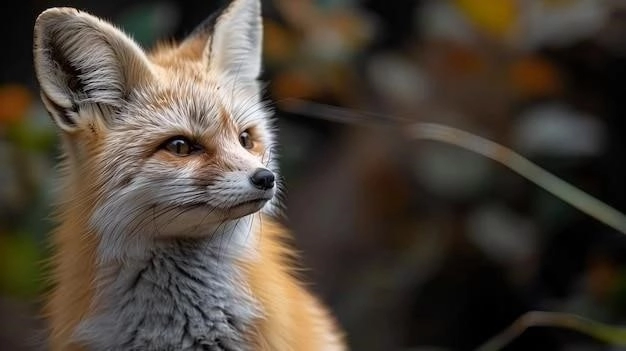
Beyond their impressive physical adaptations, Fennec foxes exhibit a repertoire of behaviors meticulously crafted to cope with the extreme temperatures of their desert habitat. These behaviors, passed down through generations, are as crucial to their survival as their physical attributes, enabling them to conserve water, regulate body temperature, and exploit the cooler hours of the day.
The most conspicuous behavioral adaptation of the Fennec fox is its nocturnal lifestyle. While the desert bakes under the scorching sun, Fennec foxes seek refuge in the cooler depths of their underground burrows. These extensive burrows, often spanning a network of tunnels and chambers, provide a stable and cool microclimate, shielding them from the harshest conditions.
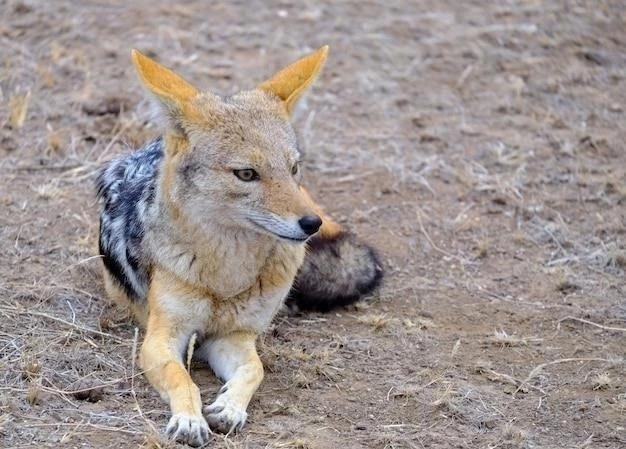
As twilight descends and temperatures become more favorable, Fennec foxes emerge from their subterranean havens to hunt. Their large ears, so prominent in the landscape, become invaluable tools, picking up the faintest sounds of insects, rodents, and other prey moving in the darkness. This nocturnal behavior not only allows them to avoid the oppressive heat of the day but also provides a tactical advantage, allowing them to exploit prey that is also seeking respite from the sun.
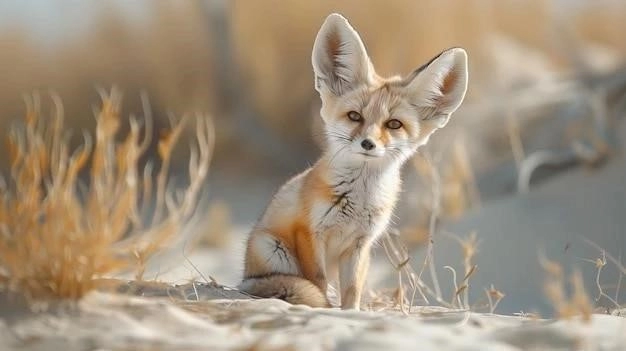
Panting, a common thermoregulatory mechanism in many canids, is also employed by Fennec foxes to dissipate heat. However, in an environment where water conservation is paramount, panting is used sparingly. Instead, Fennec foxes rely more heavily on their large ears to radiate excess body heat, minimizing water loss through respiration.
Furthermore, Fennec foxes have been observed to display a behavior known as “sand bathing,” where they dig shallow depressions in the cooler sand and lie down, allowing the sand to absorb heat from their bodies. This simple yet effective behavior provides a welcome reprieve from the heat, particularly during the hottest hours of the day.
Dietary Strategies in an Arid Environment
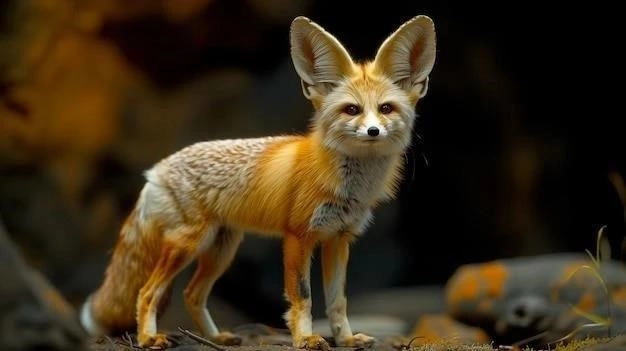
The arid expanse of the Sahara Desert presents a formidable challenge for any creature seeking sustenance, yet the Fennec fox exhibits remarkable dietary flexibility, demonstrating an ability to exploit the limited and often unpredictable food resources of this challenging environment. Their omnivorous diet, coupled with resourceful foraging techniques, ensures their survival in an ecosystem where food can be scarce and widely dispersed.
Insects, particularly locusts, grasshoppers, and beetles, constitute a significant portion of the Fennec fox’s diet. Their acute hearing, enhanced by their large ears, enables them to detect the slightest movement of insects beneath the sand, which they skillfully excavate with their sharp claws. This insectivorous behavior not only provides valuable protein but also contributes to the ecological balance of the desert ecosystem by regulating insect populations.
However, the Fennec fox’s diet extends beyond insects. They are opportunistic hunters, preying on small mammals such as rodents, hares, and jerboas, as well as reptiles, birds, and their eggs. Their swiftness and agility, combined with their nocturnal hunting habits, allow them to ambush prey effectively.
Plant matter also plays a vital role in the Fennec fox’s diet, particularly during periods when prey is scarce. They have been observed consuming fruits, leaves, roots, and tubers, extracting valuable moisture and nutrients from these desert-adapted plants. This ability to supplement their diet with plant matter underscores their adaptability and resilience in the face of environmental variability.
Water, a precious commodity in the desert, is obtained primarily from their food sources. Fennec foxes possess remarkable water conservation adaptations, including highly efficient kidneys that minimize water loss through urination. They have also been known to dig for water in areas where the water table is close to the surface, further demonstrating their resourcefulness in this challenging environment.
Social Structure and Communication
Fennec foxes, despite inhabiting a harsh and unforgiving landscape, exhibit a surprisingly complex social structure, forming close-knit family groups and communicating through a diverse repertoire of vocalizations and scent markings. These social bonds and communication strategies are essential for their survival, facilitating cooperative hunting, territory defense, and the rearing of young in the challenging desert environment.
The basic social unit of Fennec foxes is a family group, typically consisting of a mated pair, their offspring from the current year, and sometimes, offspring from previous litters. These family groups maintain and defend territories, which provide access to essential resources such as food, water, and suitable denning sites. The size of these territories can vary depending on the abundance of resources.
Within these family groups, a clear dominance hierarchy exists, with the breeding pair holding the highest rank. Subordinate individuals, often offspring from previous litters, may assist in raising pups, contributing to the group’s overall success. This cooperative breeding strategy enhances pup survival rates, particularly in the demanding desert environment where food and water can be scarce.
Communication among Fennec foxes is a multifaceted affair, employing a range of vocalizations, postures, and scent markings. They are known for their high-pitched barks, which serve as alarm calls, and their purring sounds, often used in amicable interactions within the family group. Scent marking, through urination and defecation, plays a crucial role in territory defense, signaling their presence to other Fennec foxes.
Furthermore, Fennec foxes engage in playful interactions, particularly among pups and subadults. These playful bouts serve not only as a form of social bonding but also as crucial learning experiences, honing their hunting and social skills for their future roles within the family group.
Reproduction and Life Cycle in Harsh Conditions
The Fennec fox, despite the rigors of its desert environment, exhibits a reproductive strategy finely tuned to maximize offspring survival in a landscape characterized by unpredictable resource availability and extreme temperatures. Their life cycle, from mating rituals to pup rearing, reflects a delicate balance between seizing optimal breeding opportunities and ensuring the well-being of their vulnerable young.
Breeding season for Fennec foxes typically occurs during the cooler months, between January and February. During this time, mated pairs, which typically form monogamous bonds, establish and defend their territories with increased vigilance. Gestation lasts approximately 50 days, culminating in the birth of a litter of 2-5 pups, usually within the confines of a well-protected underground den.
Fennec fox pups are born blind and helpless, entirely dependent on their parents for warmth, nourishment, and protection. The female, with assistance from the male and sometimes subadult offspring from previous litters, nurses and cares for the pups within the den, providing a safe and stable environment during their vulnerable early weeks.
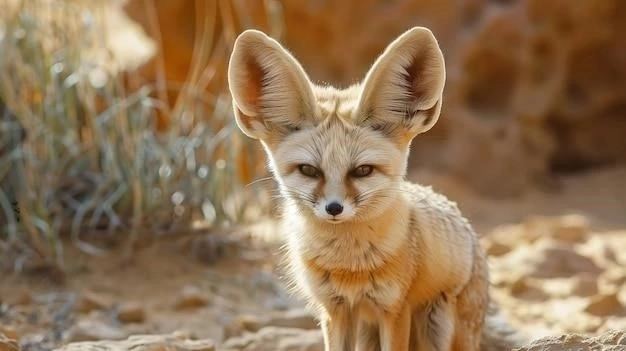
As the pups grow, they gradually venture out of the den, exploring their surroundings under the watchful eyes of their parents. During this period, they develop crucial survival skills, learning to forage for food, navigate their desert habitat, and interact with other members of their family group. Weaning occurs around 61-70 days after birth, marking a significant step towards independence.
Fennec fox pups reach sexual maturity around 9-11 months of age. However, they often remain within their family groups for an extended period, contributing to pup rearing and territory defense, before dispersing to establish their own territories and continue the life cycle in the harsh but beautiful expanse of the Sahara Desert.
Conservation Status and Threats
The Fennec fox, with its endearing appearance and remarkable adaptations, holds a precarious position in the face of mounting anthropogenic pressures on its desert habitat. While currently classified as a species of Least Concern by the International Union for Conservation of Nature (IUCN), their populations are facing an array of threats that warrant careful monitoring and proactive conservation measures to ensure their long-term survival.
One of the most significant threats to Fennec foxes is habitat loss and degradation, driven primarily by human expansion into their desert territories. The encroachment of agriculture, infrastructure development, and resource extraction activities fragments their habitat, disrupts their social structures, and reduces the availability of essential resources such as prey and denning sites.
Illegal hunting and trapping, fueled by the demand for their fur and the pet trade, pose another substantial threat to Fennec fox populations. Despite legal protections in some countries, enforcement remains challenging in remote desert regions, leaving Fennec foxes vulnerable to exploitation. The capture of Fennec foxes for the pet trade raises additional concerns, as it often involves removing individuals from their natural habitats, disrupting social structures, and potentially impacting wild populations.

Climate change adds another layer of complexity to the conservation challenges facing Fennec foxes. Rising temperatures and altered precipitation patterns could further exacerbate desertification, leading to a reduction in prey availability and making their already challenging environment even more inhospitable.
To address these threats and ensure the long-term survival of Fennec foxes, a multi-faceted conservation approach is essential. This includes strengthening legal protections, improving enforcement efforts, promoting sustainable land management practices, and raising awareness about the importance of conserving this charismatic desert dweller and its fragile ecosystem.
The Fennec Fox and Humans

The relationship between Fennec foxes and humans is a complex tapestry woven from threads of admiration, exploitation, and, increasingly, a growing awareness of the need for responsible coexistence. Throughout history, these captivating creatures have been both revered and exploited by human populations inhabiting their desert landscapes, shaping perceptions and interactions that continue to influence their conservation status today.
In some cultures, Fennec foxes are steeped in folklore and mythology, often portrayed as cunning tricksters or symbols of resilience in the face of adversity. Their nocturnal habits and remarkable adaptations have earned them a place of wonder and respect among some indigenous communities who share their desert home.
However, this reverence has not always translated into protection. The Fennec fox’s exquisite fur has, unfortunately, made it a target for hunting and trapping, particularly in the past when the demand for fur was higher. While some regulations are now in place to protect them, illegal hunting remains a threat, particularly in remote areas where enforcement is challenging.
More recently, the growing popularity of exotic pets has posed a new challenge for Fennec fox conservation. Their diminutive size, captivating appearance, and playful nature have made them increasingly sought-after as pets, fueling a demand that can be detrimental to wild populations. The capture of Fennec foxes for the pet trade raises ethical concerns and can contribute to habitat disruption and the removal of individuals from their social groups in the wild.
As our understanding of Fennec foxes and their ecological importance grows, so too does the need for responsible stewardship. Conservation efforts, education initiatives, and promoting sustainable alternatives to exploiting these animals for fur or the pet trade are crucial steps in mitigating human-induced threats and ensuring the Fennec fox continues to thrive in its desert realm for generations to come.










